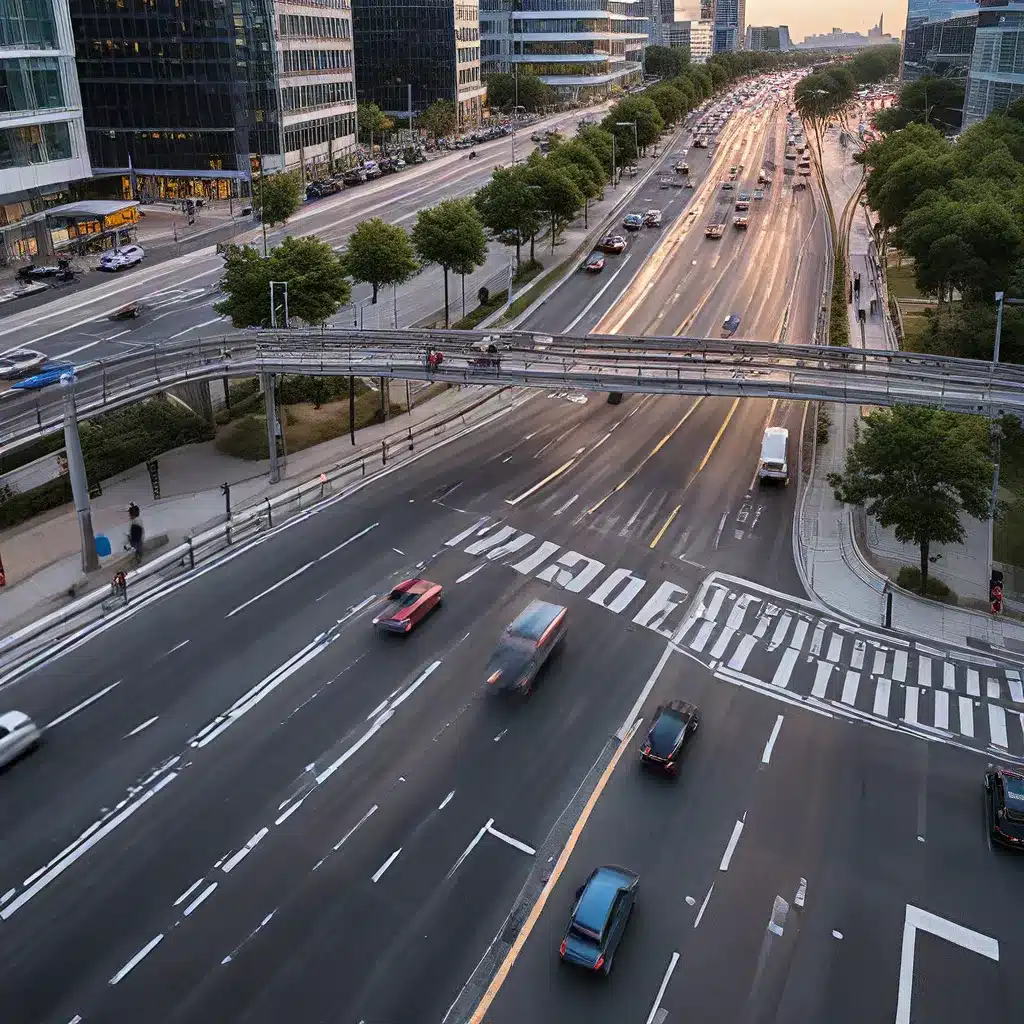
As urban populations continue to swell and the demand for efficient transportation increases, the need for comprehensive smart city solutions has never been more pressing. At the heart of this transformation lies the power of sensor networks and IoT (Internet of Things) technologies, which are revolutionizing the way cities manage and optimize their traffic flow.
Harnessing the Power of Sensor Networks
The foundation of smart traffic monitoring lies in a network of strategically placed sensors that collect a wealth of real-time data. These sensors can be installed on roads, intersections, and even individual vehicles, gathering information on traffic patterns, vehicle types, speed, and congestion levels. By leveraging advanced analytics and artificial intelligence, cities can unlock invaluable insights that inform their decision-making and enable proactive traffic management.
One such example is the city of Singapore, which has long been a trailblazer in the realm of smart city initiatives. The city’s Intelligent Transit System (ITS) combines a dynamic real-time picture of the urban landscape with a sophisticated data-sharing ecosystem. Motorists, commercial entities, and other stakeholders can access this wealth of information, empowering them to make informed decisions and optimize their transportation routes.
Similarly, Charlotte, North Carolina, is taking a bold step forward by using its array of traffic cameras and sensors to not only reduce congestion but also tackle the pressing issue of air pollution. By identifying the types of vehicles on the road, the city can make data-driven decisions to prioritize cleaner modes of transportation and implement targeted emissions-control measures.
Integrating Cutting-Edge Technologies
As sensor networks become increasingly sophisticated, cities are integrating them with a range of cutting-edge technologies to enhance their traffic management capabilities. London, for example, is leveraging AI-powered traffic sensors to identify drivers and the vehicles they operate, providing valuable insights that can inform future infrastructure planning and policy decisions.
Another city at the forefront of this transformation is Barcelona, Spain, which has implemented a sensor-based parking solution. By detecting the availability of parking spots in real-time, the city can guide drivers to open spaces, reducing the time spent searching for a place to park and the associated fuel consumption and emissions.
Optimizing Energy Efficiency and Environmental Impact
The impact of smart traffic monitoring extends far beyond just improving traffic flow; it also plays a crucial role in reducing energy consumption and environmental impact. San Francisco, California, is leading the charge in this area, investing heavily in the infrastructure needed to support autonomous vehicles and connected corridors. By using real-time data to optimize traffic signal timings and prioritize public transit and pedestrian mobility, the city is able to minimize the environmental footprint of its transportation system.
Harnessing Data-Driven Decisions
Across the globe, cities are recognizing the transformative power of data-driven decision-making when it comes to traffic management. Washington, D.C., for instance, is leveraging data from video cameras to gain insights into the types of vehicles and modes of transportation used throughout the city. This information is then fed into AI-based software, allowing urban planners to make informed decisions about infrastructure improvements, such as adding more bike lanes to promote sustainable mobility.
The Future of Sensor-Driven Traffic Monitoring
As sensor networks and IoT technologies continue to advance, the potential for smart traffic monitoring is truly limitless. By integrating these cutting-edge solutions, cities can achieve greater efficiency, sustainability, and livability for their residents and visitors alike.
One innovative company at the forefront of this transformation is Sensor Networks. Dedicated to providing comprehensive traffic management solutions, Sensor Networks partners with cities to leverage the power of sensor-driven insights and deliver tangible improvements to urban transportation systems.
Through the use of advanced analytics, AI, and real-time data processing, Sensor Networks’ solutions empower cities to make informed decisions, optimize infrastructure, and enhance the overall quality of life for their communities. By embracing the future of sensor-driven traffic monitoring, cities can pave the way for a more sustainable, efficient, and connected urban landscape.
Conclusion
The rise of smart cities has ushered in a new era of traffic management, where sensor networks and IoT technologies are transforming the way urban areas address the challenges of mobility, congestion, and environmental impact. From Singapore’s sophisticated Intelligent Transit System to Charlotte’s air pollution-focused initiatives and Barcelona’s innovative parking solutions, cities around the world are leveraging data-driven insights to create more livable, sustainable, and efficient transportation ecosystems.
As the demand for intelligent traffic monitoring continues to grow, the future holds endless possibilities. By embracing the power of sensor-driven technologies and data-driven decision-making, cities can unlock a new era of urban transformation, paving the way for a more connected, efficient, and environmentally-conscious future.